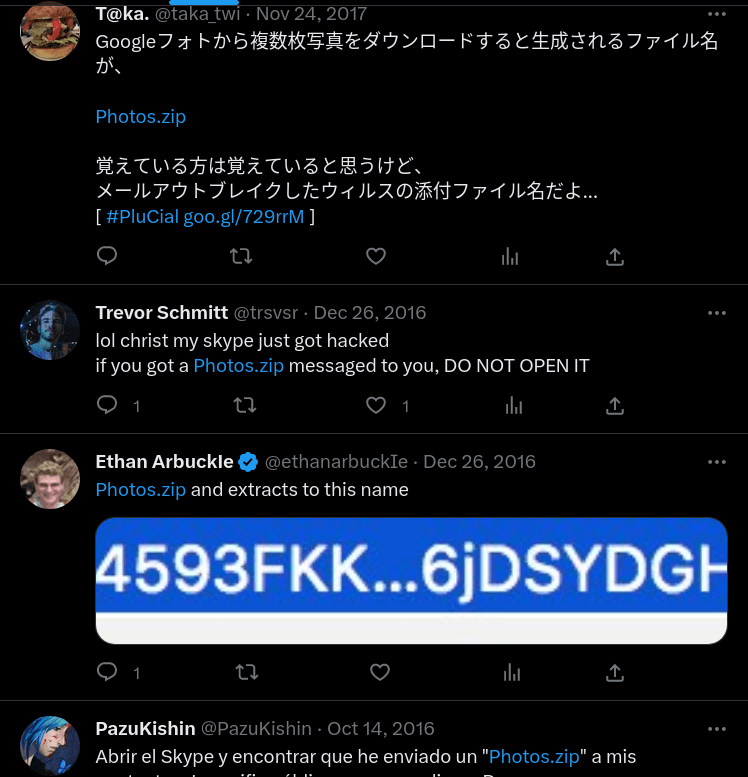Many years ago, Google applied for the .zip Top Level Domain. ICAAN, in its infinite wisdom, granted it. And now, I think, bad things are going to happen.
You see computers try to be helpful. They see you wrote “visit example.com” and autolink the thing which looks like a domain name. That’s handy – especially as most people don’t have the time or skill to write HTML.
So what happens when things which are not domain names look like they are domain names? I’ve been worrying about this for a few years:
Grrr… Because .zip is a valid TLD, it’s impossible to know whether http://t.co/webB2l1Y9w should be a URL or a filename.
— Terence Eden (@edent) February 17, 2015
Right now there is an old tweet, blog, email, or instant message from an authority figure which points to a non-existent .zip domain.

Is that domain available to buy? Well, let’s look at Google’s Domain Availability site

(No, I don’t know where the missing “T” is either.)
Yup! OK, premium domains like photos.zip appear to be about £1,000 – which should put off some scammers. But the price for non-premium .zips is between £10-£30.
Look, I doubt a former president ever Tweeted “Hey, anyone know how I extract files from something called blah.zip on a Mac?” but I’ll bet you that something, somewhere, is going to be abused with this new TLD.
I feel like a curmudgeonly old fart. Don’t we have enough TLDs? What’s the limit? There are very few meaningful controls on who can register all but the most retrictive TLDs (looking at you, .int!) So at what point do we just give up and same everyone can have their own Top Level?
Anyway, have fun determining if the link you see was ever intended to link to a website!









